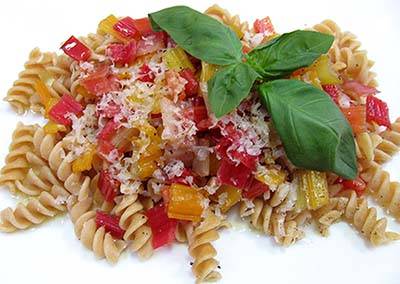 This year, 43 million U.S. households plan to grow at least some of their own food, up from 36 million just a year ago. But unlike previous increases in gardening during recessions and depressions, this increase is expected to be more lasting.
This year, 43 million U.S. households plan to grow at least some of their own food, up from 36 million just a year ago. But unlike previous increases in gardening during recessions and depressions, this increase is expected to be more lasting.
For one thing, people aren’t just gardening to try to save some money. According to a National Gardening Association survey, 58 percent of those putting in a garden said they were doing it for better-tasting food as compared to 54 percent who were trying to save money on their food bills. Just over half said they were gardening to have better quality food. And, 48 percent said they were doing it because they knew what they were growing was safe. Go figure.
As a nod to the importance of local food and belt tightening, even the Obamas put in a so-called Victory Garden. But as great as growing our own food is, it is just as important to remember the lessons our parents and grandparents learned from their Victory Gardens. Chief among these was not wasting what they grew.
By not wasting, I don’t mean obvious waste like forgetting about a bag of lettuce and having it turn to ooze in the back of the fridge. I mean, not throwing out perfectly edible parts of what we’ve worked so hard to grow. In the interest of decreasing the sweat equity of our compost piles, here are some ways to use more of what we harvest.
Asparagus Bottoms
No one likes the woody parts of asparagus. Yes, you can “peel the tougher outer layer from the stem with a knife or vegetable peeler” blah, blah, blah. I don’t expect you to have the time or patience for this when I don’t myself. Just cut off the woody parts and toss them in an airtight bag in the freezer. When asparagus season ends, as it does all too soon, retrieve the stem ends and make soup like this one adapted from Cooking Light. Cook the stem ends in broth (3 cups of stem ends to 2 cups of broth) until soft with ½ t of dried thyme, 1 bay leaf, and 1 minced clove of garlic. Blend the asparagus-broth mixture and strain it through a mesh sieve or food mill — a pain yes, but far more efficient than peeling stalk after stalk. Then, in a heavy pan, heat 1 T of flour mixed with 2 cups of milk. Add the asparagus mixture and a dash of nutmeg. Bring to a gentle boil. Reduce heat and simmer until thickened. Stir in 2 t of butter, salt and pepper to taste. You also can add the zest of one lemon.
Radish Tops
Radish tops are a classic case of us wasting things that are common food sources in other countries. You can use radish tops just like other greens and add them to omelets, frittatas, and soups or use them on their own. Like other textured greens, you’ll want to give them a good rinse before you cook them to remove any trapped sand or dirt.
Swiss Chard Stems
With varieties as pretty as rainbow chard, how can you not use the stems? Cut the stems into ½-inch dice, removing any strings from larger, late-season stems. Blanch for 1 ½ to 2 minutes in 2 cups of water in a heavy pan until just tender. Drain. Rinse pan. Heat a couple of tablespoons of oil in the pan. Add 2 cloves of thinly sliced garlic and sauté until fragrant. Add the stems and sauté for 30 seconds, just long enough to pick up the garlic flavor. Sprinkle with salt and fresh cracked pepper and pour over pasta, bulgur, polenta, or couscous. Alternatively you can give a nod to Swiss chard’s beet cousin and dress blanched stems with a quick pickle of ¼ c vinegar, ¼ c water, and 3 T of sugar.
Marion Cunningham, author of the Victory Garden, takes her Swiss chard stems very seriously, blanching 4- to 5-inch lengths and topping them with hollandaise. Add a poached egg and an English muffin, and you’ve got Rainbow Chard Benedict.








